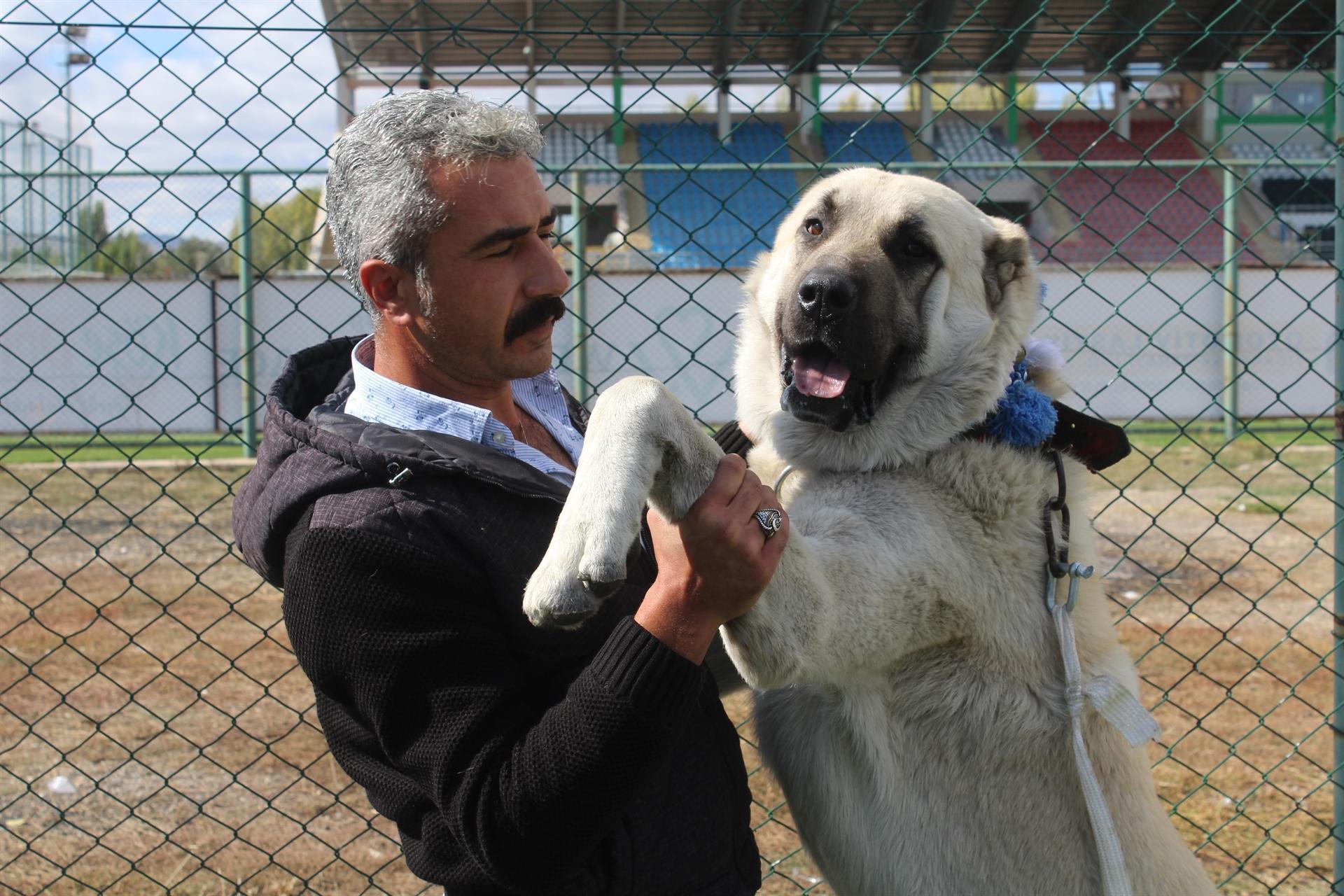Kangal dogs compete in beauty pageant in Sivas
SİVAS

A total of 103 Kangal dogs have competed in a beauty contest organized in the Central Anatolian province of Sivas.
The jury evaluated the dogs – which were registered in one of the four categories of cub, young, adult and veteran – on the basis of their body sizes, leg length and color.
Various prizes were awarded to the owners of the dogs that had the highest scores.
Sivas Gov. Salih Ayhan said during the event that Kangal dogs were a “trademark” of the province and everyone should embrace “this value.” “There are, unfortunately, those who are using Kangal dogs for their bad intention. We will interfere with this, we will protect and give the heaviest punishment,” he said, referring to dog-fighting gangs.
The Kangal dog is a large and powerful ancient livestock guardian originally from Sivas.
This dog has been selectively bred over hundreds of years primarily as a Turkish sheep dog based on their size, strength, temperament and appearance. They are also known as Kangal shepherd dog (“Kangal çoban köpeği” in Turkish).
They are especially suited to working in pairs or teams to protect livestock from large predators such as foxes, wolves and bears. Because of this, they have a predictable and reliable temperament of being gentle with livestock and children and aggressive to predators.
They were historically bred by Turkish shepherds, however, in the late 20th century the Kangal become popular in the United States for their ability to guard sheep, goats and cattle.
The competition was organized on Oct. 12 by the local governor’s office and Directorate of Provincial Agriculture and Forestry, within the framework of activities commemorating the 100th anniversary of the Sivas Congress – a milestone on the Turkish Republic’s road to independence.
The congress was an assembly of the Turkish National Movement held for one week from Sept. 4 to 11 in Sivas. It united delegates from all Anatolian provinces of the Ottoman Empire, which was defunct at the time in practical terms.
At the time of the convention, the state capital Istanbul as well as many provincial cities and regions were under occupation. The call for the congress had been issued by Mustafa Kemal Atatürk with his Amasya Circular three months before, and the preparatory work had been handled during the Erzurum Congress.
The congress in Sivas took a number of vital decisions which were fundamentally to shape the future policy to be conducted in the frame of the Turkish War of Independence.
















